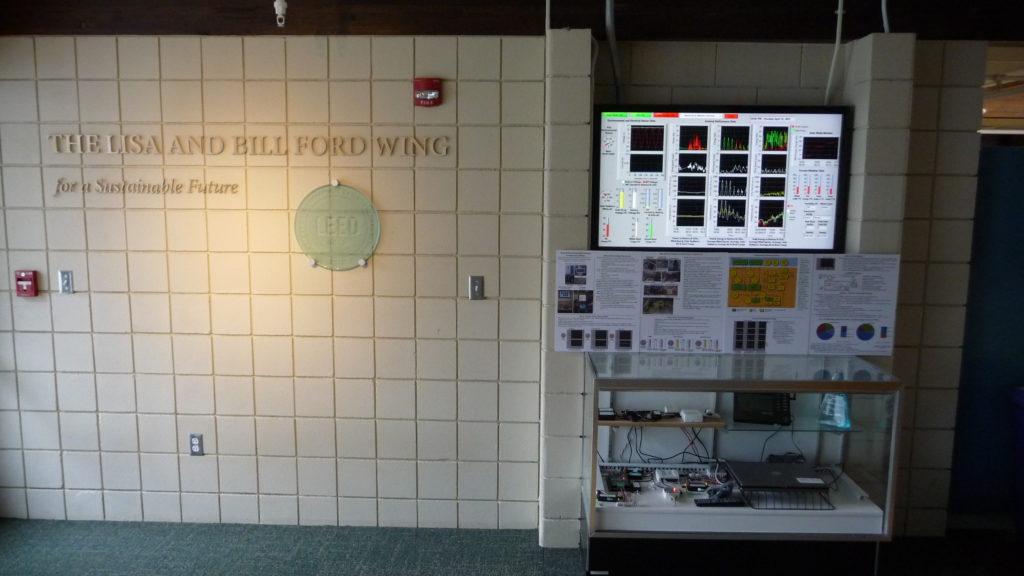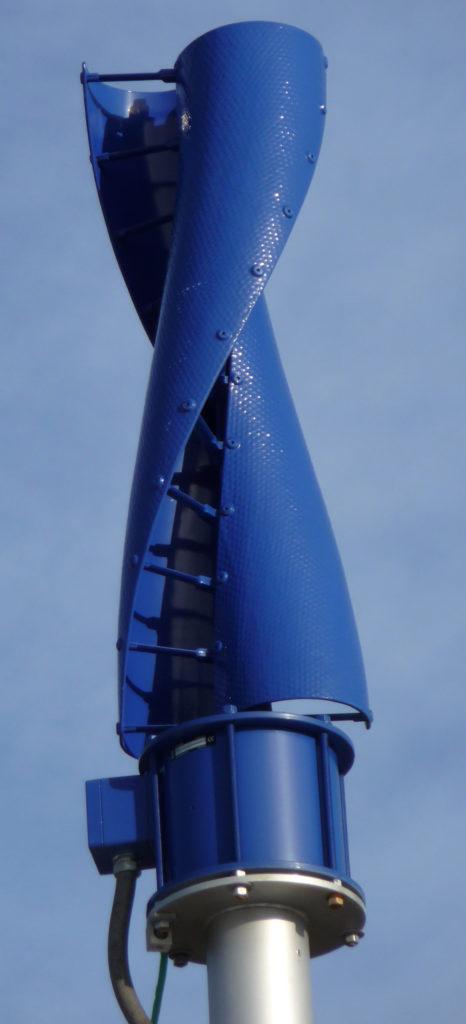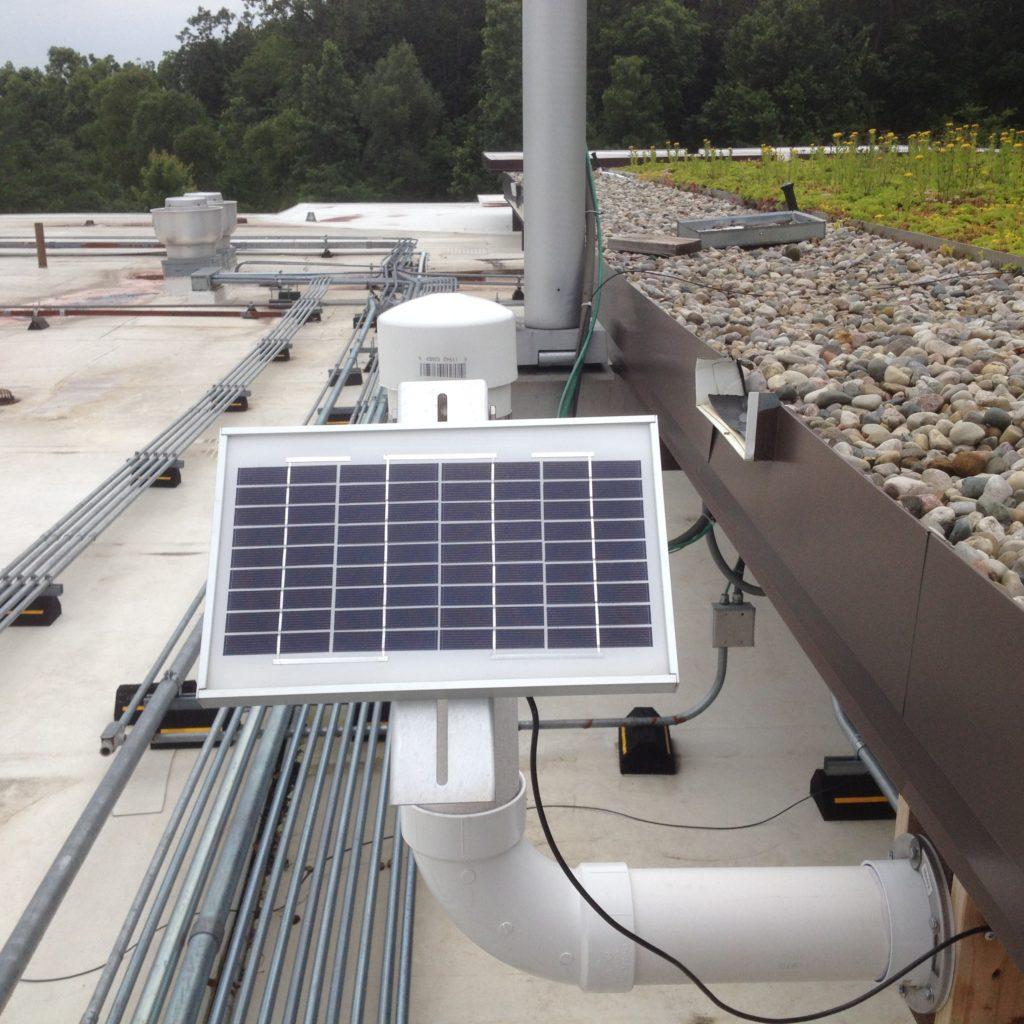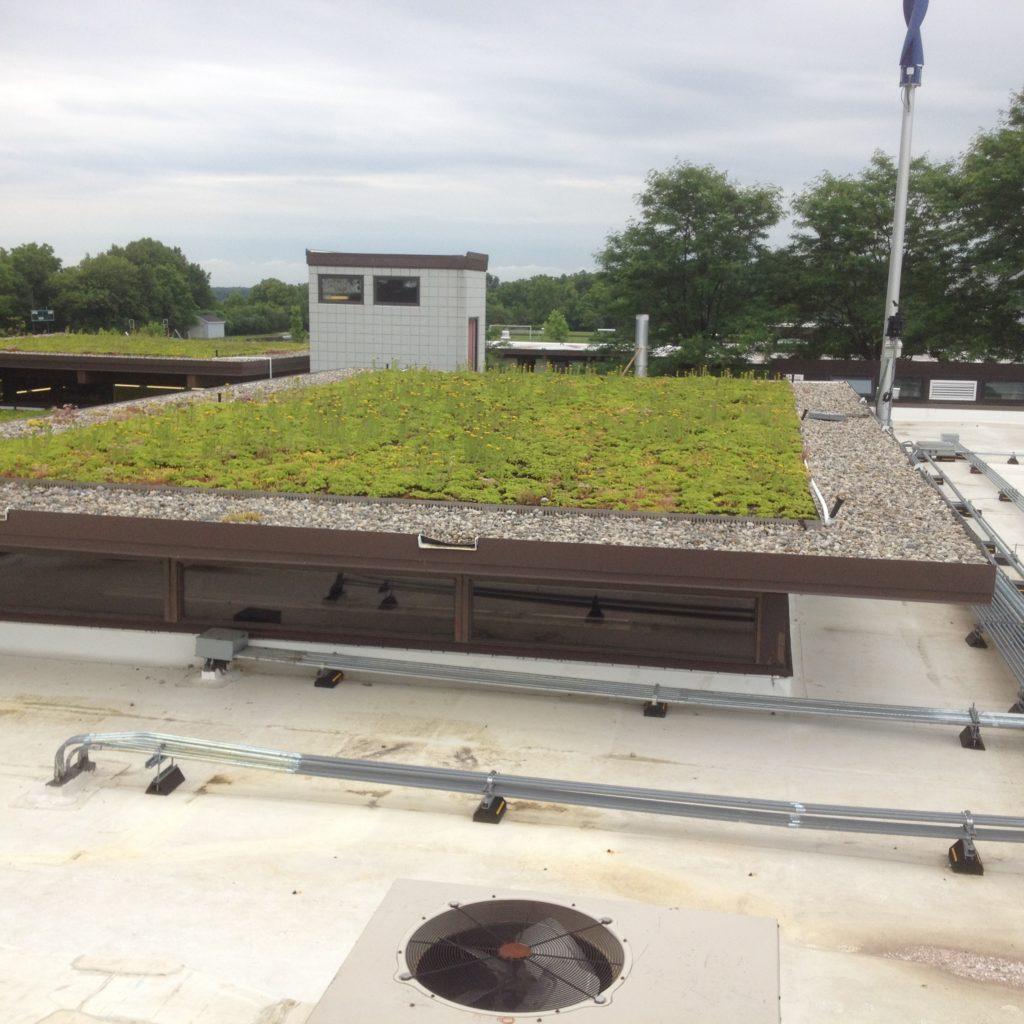
Innovatively using Vernier technology beyond the walls and time constraints of a typical classroom, Chris Gleason, a middle school science teacher, and her husband, Jim, a retired electrical engineer, created the Greenhills Renewable Energy Dashboard (GRED). GRED collects, displays, and archives continuous, real-time performance data from the rooftop renewable energy resources at Greenhills School in Ann Arbor, Michigan. These include a 10 W wind turbine, a 5 W solar array, and a living green roof that covers portions of the school’s standard white roof. GRED also captures environmental data, including wind speed and solar irradiance, from a rooftop Davis weather station.
The GRED components are on display inside the school. Control and data acquisition is enabled by multiple Vernier technologies: two SensorDAQ® interfaces, four current sensors, three voltage sensors, two rooftop temperature sensors (one pinned to the white roof and one tucked under the green roof), and a Digital Control Unit (DCU). The wind turbine and solar array are connected to a 12 V battery via their respective charge controllers that provide power to two 5 W LEDs.
A custom LabVIEW program displays selected real-time and historical data. The program also archives all of the data in spreadsheet files for access by teachers and students. The on/off state of the LEDs are controlled by the LabVIEW program (via the DCU and a relay) to periodically illuminate a dedication wall.
Chris Gleason believes GRED exemplifies how middle and high school science teachers can enhance student learning by integrating educational resources related to energy, weather, data analysis, and STEM.
In the hope that GRED will be useful to other middle and high schools and will lead to the development and sharing of ideas on how to better leverage the existing investment, including hardware architecture and control software, GRED data and documentation is available.



